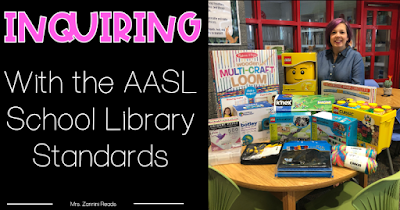Inquiring with the AASL standards
Jill Tyner at Bethel Elementary collaborates with classroom teachers to put the AASL Inquire standards to work.
In a recent collaboration unit with 3rd Grade teachers, Mrs. Tyner guided students through an inquiry-based research project. She began the unit aligning with the “think” domain where the students “formulated questions about a personal interest.” (AASL 2018, Learner I.A.1.)
Students were given the challenge to create a “Thick” question about a topic of choice. This was an assignment that the librarian and teachers thought would give students some trouble, but they were amazed with the quality of questions the students wanted to research. Since this was a new collaboration project, the teachers were unsure of the outcomes.
Once the students created their questions, they began the research process using a variety of resources - books, SC Discus, and kid-friendly websites. The lessons provided by the librarian, Mrs. Tyner, were taught outside of the fixed-schedule lessons. With the limited time during the scheduled visits on her fixed schedule, Mrs. Tyner finds it difficult to teach these collaborative lessons during that time period. These lessons helped students to “devise and implement a plan to fill knowledge gaps.” (AASL 2018, Learner I.B.2.)
As the students worked on their own in the classroom, Mrs. Tyner would pop in, as her schedule allowed, to check and assist with student progress.
Mrs. Tyner also taught students how to use Book Creator to present their research. This aligned with “facilitating the development of products that illustrate learning.” (AASL 2018, Librarian I.B.3.)
The students then shared their work. The title page of each of the books created was printed and displayed on a bulletin board outside the library. A QR code was placed on each cover. The kindergarten students came through with iPads and scanned the QR codes. The Book Creator site provides a “read to me” option. The kindergarten students had headphones in the iPads and were able to listen to each of the books they selected. This provided for an authentic audience for the 3rd grade students. By sharing these, the librarian was able to “provide opportunities for learners to share learning products and reflect on the learning process with others.” (AASL 2018, Librarian I.C.2.)
This research project allowed for collaboration between different grade levels and the library, tying in library standards along with Kindergarten and 4th grade standards.
References:
American Association of School Librarians. (2018). National School Library Standards for Learners, School Librarians, and School Libraries. Chicago: ALA.




Comments
Post a Comment